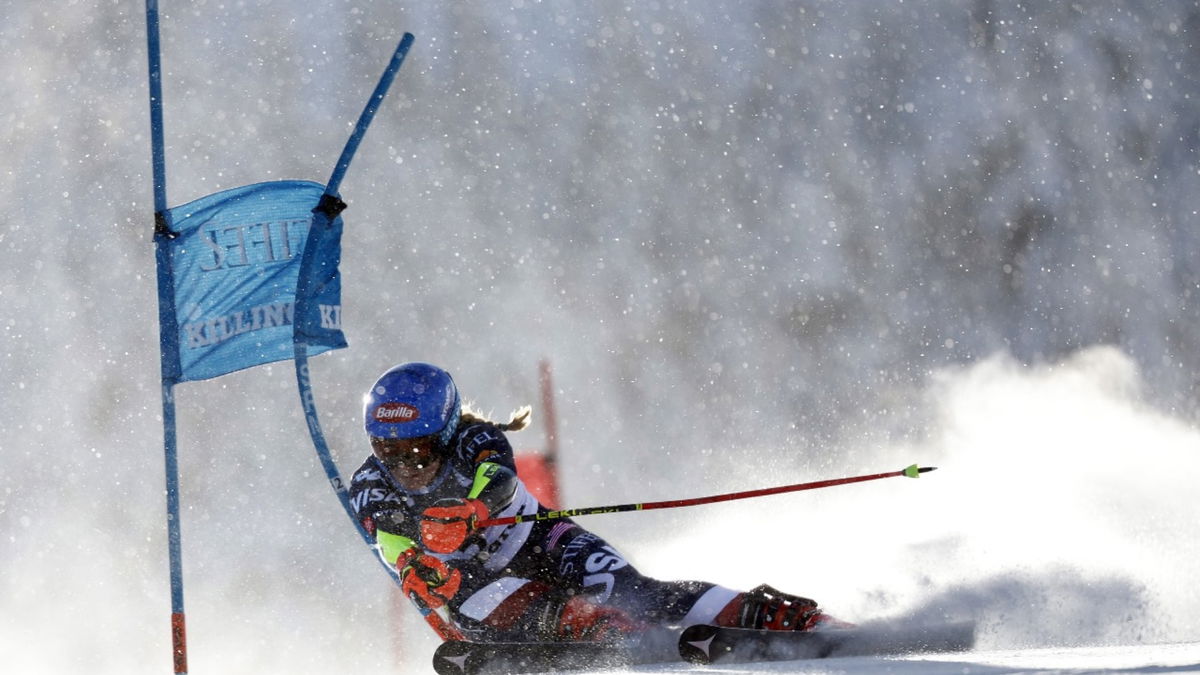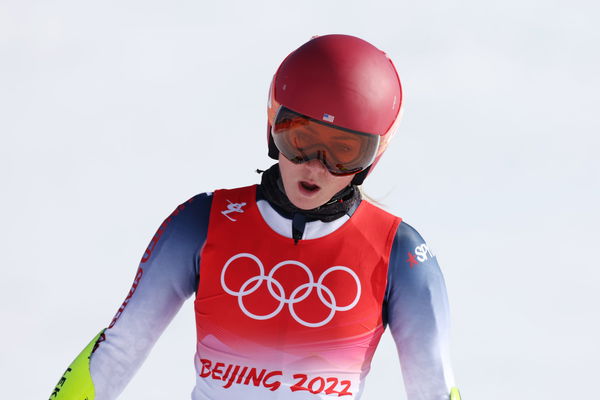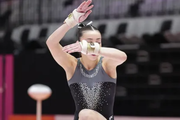

Mikaela Shiffrin was closing in on her 100th World Cup victory when her season took a violent turn. In the final stretch of a giant slalom run in Killington, Vermont, she leaned into the hill, lost an edge, and went tumbling through a gate before slamming into another and coming to rest in the safety netting. She was leading after the first run, chasing a milestone on home snow. But then, she left the hill in an ambulance with a wound no one could immediately explain.
Watch What’s Trending Now!
A deep, three-inch gash that had sliced through her abdominal muscles and stopped just short of her colon. It was an injury almost unheard of in Alpine skiing, and one whose origin remains a mystery.
Her mother, Eileen Shiffrin, was watching from below. “She didn’t seem like she was moving,” she recalled. “The way she fell she could have had a neck injury or back injury. I was trying to stay calm.”
ADVERTISEMENT
Karin Harjo, her head coach, dropped her camera mid-run and sprinted up the slope to where a ski patroller and the first medic had already reached her. Shiffrin was shivering in the thin racing suit, struggling to breathe and unable to move without sharp pain through her midsection. “When somebody is laying on the ground in that kind of pain and there’s not a deformity, there’s no extreme blood coming out from anywhere, then you really are concerned because there’s something happening inside that you can’t see,” Harjo shared.
To this day, no one has determined what pierced her body that afternoon. It may have been her pole. It could have been the gate she struck. Perhaps the sheer force of the crash caused it. Regardless, Shiffrin was at once extraordinarily unlucky and remarkably fortunate.
Alpine crashes often carry that paradox, as severe as they are, they are frequently just shy of catastrophic. For Shiffrin, the wound was not clean. Whatever entered her body damaged her transversus abdominis, the deepest core muscle responsible for stabilizing the spine. It created internal bleeding and fluid buildup that resisted the usual drainage methods.
ADVERTISEMENT

Getty
YANQING, CHINA – FEBRUARY 07: Mikaela Shiffrin of Team United States reacts after not finishing her run during the Women’s Giant Slalom on day three of the Beijing 2022 Winter Olympic Games at National Alpine Ski Centre on February 07, 2022 in Yanqing, China. (Photo by Adam Pretty/Getty Images)
Her rehabilitation became a race against time.
ADVERTISEMENT
Physical therapist Regan Dewhirst estimated a return in six to twelve weeks, with the 2025 world championships looming nine and a half weeks after the crash. This was not an ACL tear or a bone break, injuries with well-defined recovery roadmaps. Shiffrin’s team was in unfamiliar territory, improvising daily while trying to preserve her starting spot in the giant slalom and her confidence for the next Olympic cycle.
Every core exercise was a battle. On some days, she felt as though her right leg and hip were no longer attached to her body.
Months later, she returned to competition, capturing that 100th victory and another soon after. But the episode left her with scars, both physical and mental, and also with a reminder of how quickly a season, and a career, can hinge on a single moment no one can fully explain.
ADVERTISEMENT
Now, Mikaela Shiffrin approaches her current training with the precision of someone determined to restore every facet of her performance.
Mikaela Shiffrin rebuilds her power from the ground up
Shiffrin’s preparation period is now centered on what she describes as “returning my strength and coordination back to top level,” a methodical process that begins well before any high-intensity work. The emphasis is on building a stable foundation, a principle she refers to as “working from the ground up,” ensuring that each element of her body can sustain the demands of elite competition.
ADVERTISEMENT

Getty
COURCHEVEL, FRANCE – MARCH 16: Mikaela Shiffrin of Team United States competes during the Audi FIS Alpine Ski World Cup Women’s Downhill on March 16, 2022 in Courchevel, France. (Photo by Alexis Boichard/Agence Zoom/Getty Images)
Her sessions open with mobility work, starting with foam rolling to release tension along the spine. She pays close attention to her thoracic and lumbar regions, aiming to keep the spine “segment by segment… as mobile and free as possible” so that load is distributed evenly rather than concentrated. This focus on mobility is followed by band-assisted cat-cow stretches and targeted core activation, which prepare her body for the more strenuous segments of training. It is a progression that reflects both patience and deliberate structure.
Once fully engaged, Shiffrin moves into strength-focused exercises, including crossover lateral step-ups with weight, hanging side oblique flexion, and pull-ups. The oblique work holds particular importance for her, as she continues to rebuild core connection and resilience.
ADVERTISEMENT
“This has been an ongoing process to work on my oblique strength again, which is hugely important in ski racing,” she explains. With each repetition, she reinforces not only muscle capacity but also the stability that supports her technique. It is a process defined not by urgency, but by an unyielding commitment to readiness for the challenges of the next season.
Top Stories
NFL Suspends Chargers’ Denzel Perryman for Two Games Over Cowboys Incident

Clark Hunt Admits Being Pressured to Leave Arrowhead After Chiefs Offered $2.4B Proposal

American Gymnastics Coaches Tied to Training Olympians Face Suspensions

Steelers Confirm $45M Punishment for DK Metcalf After NFL Suspended WR for 2-Games

Sean McDermott Confirms if Bills Will Sign a QB Amid Josh Allen’s Injury Concerns

FOX Earns Rare Moment of Respect as NFL Honors NASCAR Legend Live on Air

For Shiffrin, the road back was as uncertain as the cause of the wound itself, yet it carried her toward another chance at Olympic redemption.
ADVERTISEMENT
ADVERTISEMENT
ADVERTISEMENT

